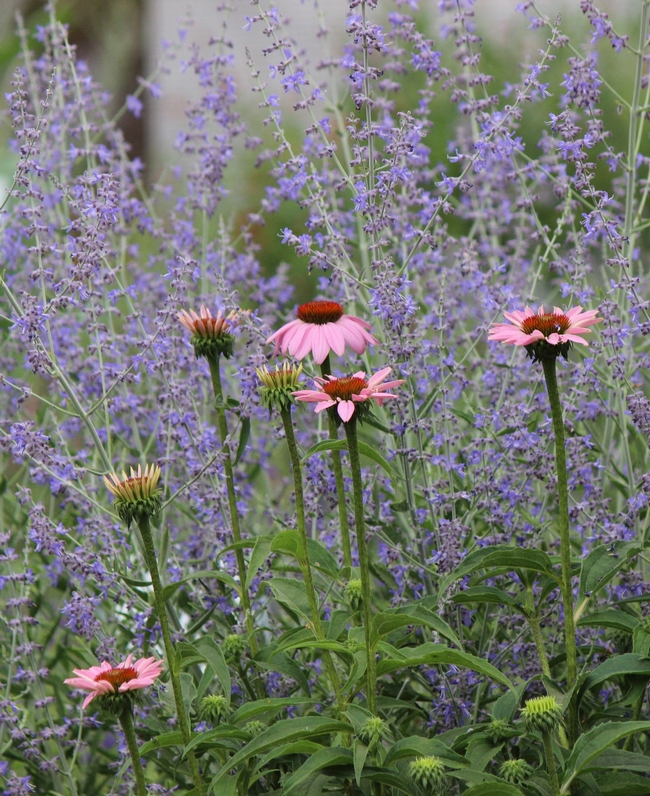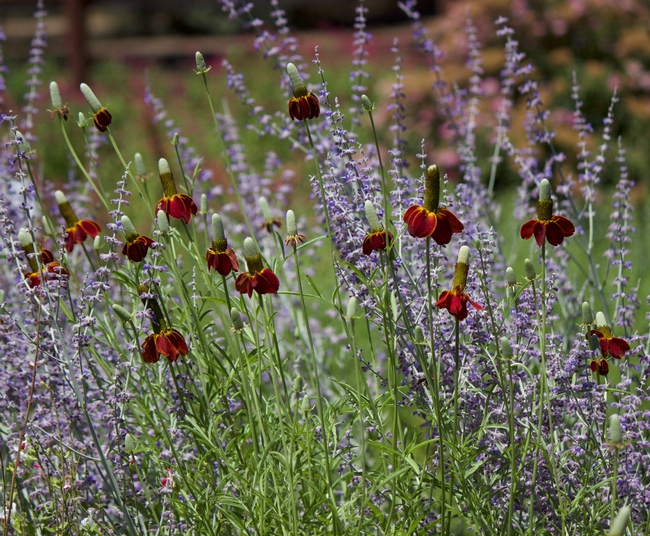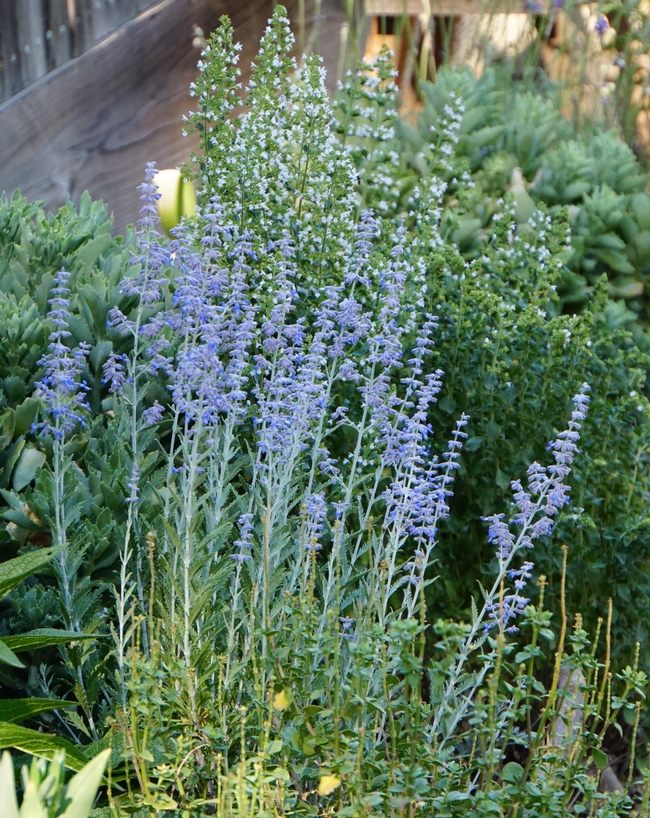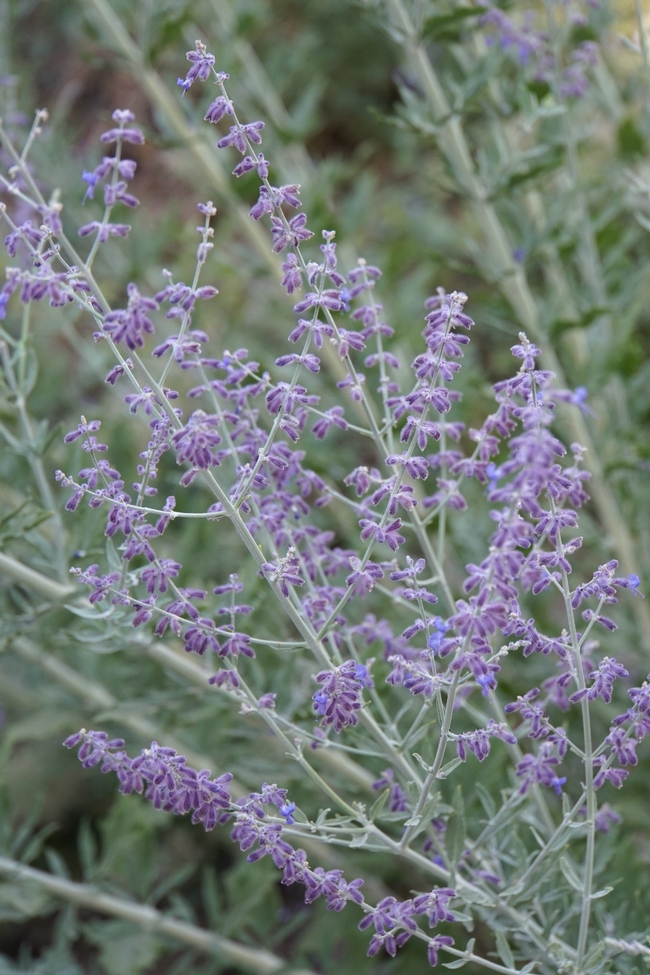Conserving water and helping bees are goals shared by many gardeners. Given California's current extreme to exceptional drought status, it's time to re-visit the best low water plants for bees. Haven scientists are nearing the end of a long-term project examining bee preference for commonly used landscape plants. We've focused on low-water plants for northern California, while our San Diego-based colleagues have focused on southern California plants.
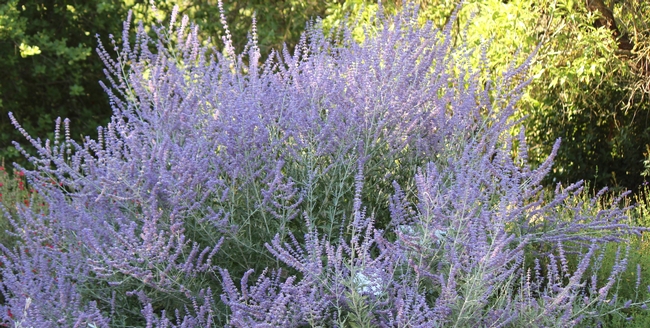
One of the consistently most-preferred plants has been Russian sage, Salvia yangii, formerly Perovskia atriplicifolia (read about its reclassification here). It's been either the first, second, or third most attractive plants to honey bees, and second, third, and sixth most attractive plant to native bees over the course of our observations.
Native to central Asia, this plant copes well with hot, dry conditions as well as extreme cold. It blooms from late spring to frost, providing a season-long bee resource. Like most members of the Lamiaceae, it serves only as a nectar source. Pair it with a complimentary colored pollen-providing plant in pink or red, like the coneflowers shown here, for both garden interest and bee nutrition.
